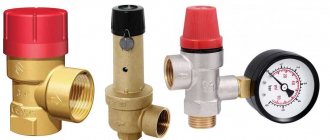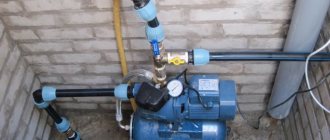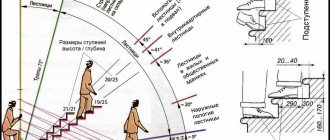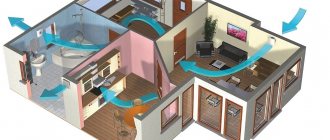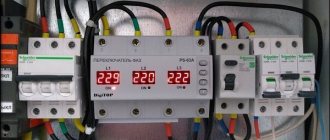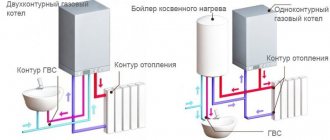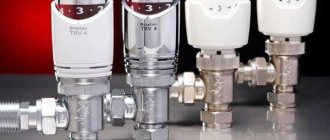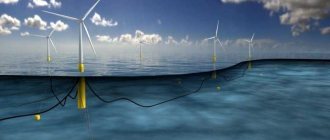Self-installation of a boiler is considered a responsible undertaking that requires maximum compliance with the rules and regulations of connection. A safety group must be involved in piping the water heater, which includes a safety valve for the boiler - a small but functionally important device.
In this article we will consider the types of safety valves and their design features. After all, in order to install the heater without errors, you need to understand the structure and operating principle of the valve.
We will also provide instructions for piping the boiler and tips for installing a safety valve, and give useful recommendations on choosing suitable equipment.
Causes of leaks and their elimination
If water drips from the safety valve, and this causes you a number of inconveniences, you can try to deal with this problem yourself. The specific decision you make will depend on exactly when the leak occurs and for what reason.
Due to natural leakage or valve problems
If water drips only periodically during the process of heating the tank and its quantity is very small, then the problem can be solved simply by placing a water collector under the valve, as mentioned above.
You can also attach a rubber hose to the water heater valve and direct its other end into the toilet or container on the floor if you are not comfortable connecting the liquid collector directly under the tank. Just make sure that the outer end of this tube is not in the water, otherwise all your efforts will be useless.
Water heater connection diagram.
Now let's look at some more complex cases when dripping from the water heater occurs constantly, no matter what condition the tank is in. This should alert you, since this phenomenon is not considered normal. The first thing to do is call a specialist to unscrew the valve and check it for serviceability.
But if the cause of the leak is in the water heater valve itself, it must be replaced with a completely new one. It is also recommended to install it with the help of a specialist, since you yourself will not be able to screw it on according to all the rules.
In case of excessive internal pressure
But very often it happens that the valve is in perfect order. What then could be the reason for such a rapid leak from the tank? Then it's all about pressure. The fact is that sometimes the pressure is so strong that the boiler is unable to withstand it, even if the water in it is cold and not in a state of heating. This happens very rarely, but it does occur in everyday situations.
Water heater operation diagram.
Then you have two ways to solve this problem.
The first way is to install a pressure reducer. This is a special device that is not very expensive and is installed to additionally equalize the water pressure in the tank. Often in houses where specialists have already encountered a similar problem, they offer to immediately buy it and install it in the tank even during the installation of the boiler itself.
The second way is to install a special device called an expansion tank. This is a more expensive installation that will require more time and skills for installation. But installing a tank is usually used only in extreme and rare cases when nothing else helps. The tank simply has great power, which can greatly reduce the water pressure at the entrance to the tank.
If the problem is in the container itself (tank)
There are often cases of water leaking from the boiler itself, when the valve has absolutely nothing to do with it. This phenomenon is considered absolutely abnormal, no matter how you look at it. First you need to find out where exactly the leak is coming from.
So, if the heating tank is damaged on the outside of the housing, which is immediately visible to the naked eye, resulting in water dripping from its wall, then there can only be one way out - replacing the boiler. Sealing or soldering is unlikely to be of any help here. And even if they give an effect, it will be very short-lived. This phenomenon usually occurs after many years of using a high-quality tank or when the product turns out to be a fake. Additional reasons may be that the protective coating of the water heater from internal corrosion and scale is not of sufficient quality.
If you see that the walls of the tank are absolutely intact and undamaged, but water is still dripping, look under the bottom cover of the tank. Most likely, this is where the leak is coming from. In this case, to solve the problem it is necessary to completely disconnect the boiler from the power supply system, remove the tank from the awnings and unscrew the lid.
There you will see a tube (small hatch) of the water heater in the center with a rubber gasket on it. This gasket must be replaced with a new one. After this, close the tank and hang it in place. Connect the power and check to see if the leak is fixed. If the actions do not produce any effect, then you need to call a specialist. But, most likely, you will have to change the tank completely.
- Steel radiators: how to calculate heat?
- How to make an electric boiler with your own hands?
- Pyrolysis boiler connection diagram
- How to fold a stove with your own hands
- Do-it-yourself ecowool installation
- How to properly clean heating radiators
- Characteristics and installation of a two-pipe horizontal heating system
How to choose
When choosing a safety valve for a water heater, pay attention to the following components:
- the temperature for which it is designed;
- threaded connections (usually half an inch);
- pressure;
- Is there a handle for forced draining in the design?
When purchasing a relief valve, be sure to check its pressure, because... this is one of the most important indicators. If you buy a device with a smaller size, you will constantly have to deal with the problem of water leakage. If it is larger, then it may be useless and will not protect the container from explosion.
You will also need to install a water filter, which will protect the water heater.
Types of security groups and the principle of choosing the appropriate model
A standard safety valve for a boiler may differ in design in several design features. These nuances do not change the functionality of the device, but only simplify use and maintenance. To choose the right safety unit, you need to know what safety valves for boilers are and how they differ.
Lever models
The most common type of standard safety assembly is the lever model. This mechanism can be activated manually, which is convenient when checking or draining water from the boiler tank. They do it like this:
- A horizontally located lever is installed vertically;
- direct connection to the stem activates the spring mechanism;
- the safety valve plate forcibly opens the hole and water begins to flow from the fitting.
Even if the tank is not completely emptied, a control drain is performed monthly to check the functionality of the safety unit.
The products differ in the design of the lever and the fitting for discharging water. If possible, it is better to choose a model with a flag fixed to the body. The fastening is made with a bolt that prevents children from manually opening the lever. The product has a convenient herringbone-shaped fitting with three threads, which ensures reliable fixation of the hose.
The cheaper model does not have a flag lock. You can accidentally catch the lever with your hand and unnecessary drainage of water will begin. The fitting is short, with only one threading ring. It is inconvenient to fix the hose onto such a protrusion and can tear it off under strong pressure.
Models without lever
Safety valves without a lever are the cheapest and most inconvenient option. Such models often come complete with a water heater. Experienced plumbers simply throw them away. The units operate similarly to lever models, but there is no way to manually perform a control drain or empty the boiler tank.
Models without a lever come in two versions: with a cover at the end of the body and blind. The first option is more convenient. If clogged, the cover can be unscrewed to clean the mechanism. A blind model cannot be tested for functionality and cannot be descaled. The fluid discharge fittings for both valves are short with one threaded ring.
Safety components for large water heaters
Water heaters with a storage tank volume of 100 liters or more are equipped with improved safety valves. They work in a similar way, only they are additionally equipped with a ball valve for forced drainage, as well as a pressure gauge.
Particular attention should be paid to the fluid drainage fitting. It's threaded. Reliable fastening prevents the hose from being torn off by strong pressure and eliminates the inconvenient use of the clamp
Reliable fastening prevents the hose from being torn off by strong pressure and eliminates the inconvenient use of the clamp.
Original models
For lovers of aesthetics and comfort, manufacturers offer original safety components. The product is equipped with a pressure gauge, chrome plated, and given an elegant shape. The products look beautiful, but their cost is high.
Difference in body markings
High-quality products must be marked on the body. The manufacturer indicates the maximum permissible pressure, as well as the direction of water movement. The second marking is an arrow. It helps to determine which side to place the part on the boiler pipe.
On cheap Chinese models there are often no markings. You can figure out the direction of the liquid without an arrow. The check valve plate must open upward in relation to the boiler pipe so that water from the water supply flows into the tank. But it’s impossible to determine the permissible pressure without markings. If the indicator does not match, the safety unit will constantly leak or will not work at all in an emergency.
Other types of valves
When they try to save money on a safety group, they try to install a blast valve designed for the heating system on the water heater. The nodes are similar in functionality, but there is one nuance. The blast valve is not capable of releasing liquid little by little. The mechanism will work when the excess pressure reaches a critical point. The blast valve can only release all the water from the tank in the event of an accident.
Separately, it is worth considering installing only a check valve. The mechanism of this unit, on the contrary, locks the water inside the tank, preventing it from draining into the pipeline. If there is excess pressure, the working plate with the rod is not able to work in the opposite direction, which will lead to rupture of the tank.
Service
During use, depending on the intensity of hot water consumption, it is necessary to flush the safety valve for the boiler from scale, rust fragments from pipes and other foreign matter in the water. To do this, you just need to sometimes open the emergency discharge channel of excess liquid using a lever.
This mechanism should not be used to empty the water heater. Particles settling at the bottom of the tank passing through the bleed spring will get stuck and interfere with its further normal operation.
By following all the rules for using the water heater and ensuring that the safety valve is working properly, you will confidently and safely use hot water.
Main types of water heater breakdowns
A diagram of all components of the safe operation of water heaters. The main types of breakdowns of water heaters are as follows:
- It makes a lot of noise - the first sign of scale on the heating element. The noise is created as a result of the fact that initially it is necessary to warm up the lime deposit, and then the water. In such a situation, excessive consumption of electricity occurs. If the problem is not corrected, the heating element will soon fail.
- Presence of scale on internal elements. The first sign of such a problem is rusty water. It is enough to carry out routine cleaning of the internal elements.
- The water does not heat up - this indicates a malfunction of the heating element. The solution is to replace the heating element.
- Water overheating indicates that the thermostat is not performing its functions. The part cannot be repaired and requires replacement.
- Electric shock. The problem appears in the event of a voltage breakdown on the housing, if the shell of the heating element is damaged and the heating element begins to come into direct contact with water. To solve it, it is enough to replace the heating element.
- Water leaking from the tank. It mainly occurs when the storage tank is damaged by corrosion. A worn-out container should be replaced, but if a leak is observed from under the plastic cover, then the boiler must be completely replaced.
- The device does not turn on or off. To determine the cause of this problem, you will need to diagnose the device.
To make minor repairs, which include replacing external parts, just read the instructions for the water heater and you can get to work. But if the problem lies inside the device, then it is better not to conduct experiments and contact a service center to receive qualified assistance.
Causes of safety valve leakage
- Removing excess volume. As the liquid inside the tank heats up, the volume also increases. That is, when a full tank is heated, the volume will increase by 2-3%. These percentages will be drained. Therefore, there is nothing to be afraid of here, since dripping water is part of the operation of household appliances.
- Part malfunction. It is worth distinguishing between where the volume is being dumped and where the component has failed. If the water heater is turned on and the water is heated but not used, a small amount should flow out. For average operation of the water heater (cooking, washing dishes), liquid should flow out periodically and a little more than usual. Accordingly, when working for a long time, for example, taking a shower, it will flow out even more. If water drips constantly, regardless of the level of operation, then this indicates a breakdown of the device.
- Blockage. The spring opens the valve, but cannot close it, as pieces of scale or any other debris are in the way. In this case, water will always flow out, even when the boiler is turned off.
- High pressure in the water supply. In this case, it will also leak all the time, regardless of the condition of the boiler. In order to understand that this is the reason, and not the blockage, you need to measure the cold water pressure in the water supply. If it is greater than the set pressure, the safety mechanism will come into action, and this will lead to leakage.
What it is?
A dry technical definition says: an overpressure valve is a fitting that automatically releases excess water when excess pressure occurs.
It is a direct-acting device because it reacts directly to the influence of a heated medium (water or other coolant).
As a rule, an overpressure valve is included in the basic package of all compact water heating devices.
Sometimes an overpressure valve is confused with a check valve. Often both devices are placed in a single housing, which is why confusion arises. However, these devices are used to perform different tasks and are fundamentally different from each other .
Professional installation advice
Even such a simple procedure as installing shut-off valves is based on the implementation of certain rules. For example, the design of a room often requires camouflage of the pipeline and security group.
You can hide devices, but subject to three conditions:
- the length of the flexible line or pipe from the fuse to the tank should not exceed 2 m, otherwise there will be excessive additional pressure on the valve spring;
- the ideal installation of the fuse is directly to the boiler fitting, and if this does not work, then installing a tee is still excluded;
- To service the fittings, a technical hatch should be equipped.
Many people worry when they see drops of water on the valve connection. This is a normal phenomenon and indicates that the device is working properly.
From time to time, small pressure surges occur in the line, which provoke a minimal discharge of liquid. You need to worry when water either does not appear at all or pours continuously.
The line length between the water heater and the fuse should be minimal. This is necessary not for aesthetic reasons, but so as not to create additional pressure in the pipes
It should be remembered that independent modernization of safety devices is strictly prohibited. If you need a 0.8 MPa valve, then you need to purchase just such a new product, and not try to somehow remake or adjust the 0.7 MPa device.
If there is any doubt about the functionality of the safety valve, you should dismantle it and check whether the spring or seal is clogged. Are you having problems with your water heater itself and don’t know what to do? We recommend that you familiarize yourself with common boiler breakdowns and repairs. If you lack skills, invite a specialist from the service center.
Why is the safety valve on a water heater so important?
To understand the importance of this safety device, you need to familiarize yourself with its design and operating principle.
How does a safety valve work?
The safety valve design for a water heater is quite simple. Structurally, these are two cylinders with a common cavity, located perpendicular to each other.
- Inside the large cylinder there is a poppet valve, pressed by a spring, ensuring free flow of water in one direction. In fact, this is a familiar check valve. The cylinder ends at both ends with a threaded part for connecting the valve to the heater and pipe system.
- The second cylinder, placed perpendicularly, is smaller in diameter. It is plugged from the outside, and a drainage pipe is made on its body. A poppet valve is also placed inside it, but with the opposite direction of operation.
Often this device is equipped with a handle (lever) that allows you to forcefully open the drainage hole.
On what principle does the valve operate?
The operating principle of the safety valve is simple.
The pressure of cold water in the water supply presses the “plate” of the check valve and ensures that the heater tank is filled.
When the tank is filled, when the pressure inside it exceeds the external one, the valve will close, and as water is consumed, it will again ensure its timely replenishment.
The spring of the second valve is more powerful and is designed for increased pressure in the boiler tank, which necessarily increases as the water heats up.
If the pressure exceeds the maximum permissible value, the spring compresses, opening the drainage hole slightly, where excess water is drained, thereby equalizing the pressure to normal.
Importance of proper valve operation
Perhaps the description of the device and principle of operation of the valve did not fully clarify the issue of its extreme importance. Let's try to simulate situations that its absence can lead to
So, let’s say there is no valve at the inlet to the heater that blocks the return flow of water supplied to the tank.
Even if the pressure in the water supply system is stable, the device will not work correctly. The explanation is simple: according to the laws of thermodynamics, when water is heated in a tank with a constant volume, the pressure necessarily increases.
At a certain point, it will exceed the supply pressure, and the heated water will begin to be discharged into the water supply system.
Hot water may come from cold taps or enter the toilet cistern.
In this case, the thermostat continues to work properly, and the heating elements waste expensive energy.
The situation will be even more critical if the pressure in the water supply system suddenly drops for one reason or another, which happens quite often, for example, when the load at water pumping stations is reduced at night.
Or if the pipes are empty as a result of an accident or repair work. The contents of the boiler tank are simply drained into the water supply, and the heating elements heat the air, which inevitably leads to their rapid burnout.
It may be objected that the automation should prevent the heater from running idle. But, firstly, not all models provide such a function, and secondly, the automation may fail.
It would seem that in order to avoid such situations, we can limit ourselves to installing a conventional check valve? Some “smart guys” do this, not fully realizing that by doing so they are literally “planting a bomb” in their home.
It's scary to imagine what could happen if the thermostat fails.
The water reaches the boiling point in the tank, and since there is no way out of the closed volume, the pressure increases, and with increased pressure, the boiling point of water becomes significantly higher.
Well, if it ends with cracking of the enamel on the inside of the tank, this will be the least evil.
When the pressure drops (a crack forms, an open tap, etc.), the boiling point of water drops again to the normal 100 degrees, but the temperature inside is much higher.
An instantaneous boiling of the entire volume of liquid occurs with the formation of a huge amount of steam, and as a result - a powerful explosion.
All this will not happen if a working valve is installed. So, let’s summarize its direct purpose:
- Do not allow water to flow back from the heater tank into the water supply system.
- Smooth out possible pressure surges in the water supply system, including water hammer.
- Discharge excess liquid when it is heated, thus keeping the pressure within safe limits.
- If the valve is equipped with a lever, it can be used to drain water from the water heater when performing maintenance.
What is it needed for?
The function of the valve is to discharge excess hot water in the working tank of the heater. The expansion of water creates high pressure, threatening the integrity of the device.
The valve automatically drains a certain amount of water, bringing the total volume to the nominal value. This allows you to preserve the heater, protect equipment and people from contact with hot water.
Excess volumes of water are discharged through a special pipe connected to a drainage system or a special receiving tank.
Types of leaks
If the boiler is leaking from above or below
It is necessary to disconnect it from the power supply, substitute a basin and perform a thorough visual inspection. Water leaks can be different: water can simply drip, or it can flow in a stream under pressure. In most cases, water leaks from the bottom of the water heater. Use a flashlight to find the source of the leak.
The simplest case is when the leak occurs from the safety valve. It is adjusted at the factory so that excess pressure when heating water is released through a small fitting.
A simple solution to this issue is to drain this water into the sewer using a plastic flexible tube with a diameter of approximately 8 mm. In this case, you need to think about where to connect the other end of the tube. If the boiler hangs in the toilet, you can lead this tube into the flush tank;
Leakage from connections
The source of the leak may be from loose connections of the inlet and outlet pipes in the boiler itself. This can be easily resolved by repacking all threaded connections;
Leakage from under the cover
Next, use a flashlight to determine the place where the water is flowing from. If leaks are detected from under the cap, this is one of the best options. Since the cover is pressed against the boiler body through a gasket, you can try to eliminate the leak by tightening the nuts of the bolts on the cover.
If this does not work, you need to drain the water from the boiler, remove the lid and change the gasket. Before doing this, you need to disconnect all electrical wires.
Advice:
To avoid confusion in the future, you can first photograph all the connections with a digital camera or smartphone and display them on the laptop screen.
These are, perhaps, all the options in which you can eliminate boiler leaks without replacing it. However, in most cases, about 80 percent, the leak comes from the top or bottom of the boiler body.
It is important to know: often the location of the fistula in the body is almost impossible to determine, since it is covered with heat-insulating material and an outer casing. Water may flow down under the insulation or leak out around the thermometer. At the bottom of the boiler there are special holes, in case of water leakage from which you can accurately determine that it is the water heating tank that is leaking
There are special holes in the lower part of the boiler; if water leaks, you can accurately determine that it is the water heating tank that is leaking.
These are the most difficult and unprofitable options. All of the listed leak options refer to the most common brands on the market, such as Ariston and Termex.
Installation and adjustment of the safety unit
Anyone can install a safety valve on a boiler without the help of a plumber. The correct installation diagram indicates that the safety unit is attached to the cold water inlet pipe of the water heater. Below are taps, filters and other piping elements.
The valve is installed on the water heater in the following sequence:
- The safety valve is installed directly on the cold water inlet pipe going inside the water heater. Often a detachable adapter is placed between them - “American” for ease of dismantling during maintenance.
- Fum tape is wound onto the threads of the pipe or adapter to seal the connection. The safety assembly is screwed on so that the arrow on the body is directed towards the boiler.
- When screwing the safety valve onto the water heater, you need to stop when you feel a stop. On cheap models there is no mounting fuse. The part is screwed four turns. You can't turn it anymore. The thread of the pipe will close the channel of the fitting for draining the water.
After installation, it is worth looking inside the housing from the check valve side. Inside the hole you can see the seat and the locking mechanism plate itself. To check the functionality, press the plate with a finger or pencil. It should move inward, and when released, return to its original place.
When the entire circuit is assembled, begin adjusting the security unit:
- The water heater is filled with water, voltage is applied and the thermostat is set to the maximum temperature. You have to wait until complete heating occurs, and the automation will turn off the heating element.
- Drops of liquid should appear from the fitting. If they are not there, turn the adjusting screw until a positive result is obtained.
- After adjustment, use the lever to bleed some water from the tank, after which the mechanism is returned to the closed state. The drip from the fitting will stop. A new portion of water will flow inside the tank. The heating element will heat it up, and the liquid will again begin to drip from the fitting.
- The mechanism, adjusted to the maximum temperature, will always work when the permissible limit is exceeded. Now you can set a lower operating temperature on the regulator, for example, 50–60°C. When this threshold is reached, liquid will not drip from the fitting.
The safety group is checked for functionality of the forced drain lever and operation at maximum temperature once a month. If the adjusting screw is missing and the mechanism does not operate according to the required parameters, the part is replaced.
Functions
- Prevents the reverse outflow of liquid from the storage tank.
- Removes excess volume from the water heating tank to stabilize internal pressure.
- Eliminates pressure drops within the central water supply system.
- The positive release lever can be used to drain during maintenance.
- Extends the service life of electric heating elements and water heating equipment.
- Saves energy by preventing the heating element from running idle.
- Protects against emergency situations of overheating and explosion of the storage boiler.
Replacing the safety valve on a water heater
Before installing the water seal, it is necessary to turn off the power to the heater and drain the water from it. To work you will need:
- check valve;
- adjustable wrench (2 pcs);
- fum tape/tow;
- dry rags.
The process is quite simple. The water should be turned off. Then, you need to hold the hydraulic valve body with one key, and with the second, disconnect the hose from the inlet. After disconnecting the hose, unscrew the device from the boiler. Clean the threaded connection of the titanium inlet pipe from old tow or fum tape.
Apply several new turns of fum tape or tow to the inlet pipe and screw on a new water seal. Then, do not tighten the connection too much with an adjustable wrench. After this, apply a couple of layers of fum tape or tow to the male fitting of the check valve. Then screw on the connecting nut of the water hose. Open the tap valves and check the connections for leaks. That's it, installation is complete.
If water drips from the drainage hole, do not worry, as this is normal. The check valve works and performs its direct function. You can put a thin transparent hose on the outlet and direct it into the drainage or sewer system.
Some heater owners try to hide the check valve out of sight. In pursuit of their goal, they can place it at a considerable distance from the boiler. The remote placement of a water seal is not prohibited, but in this case, shut-off units or taps cannot be installed in this gap. In addition, a long vertical line can create additional pressure, which will lead to regular idle leakage.
The permissible distance between titanium and the water seal should not be more than two meters. Exceeding the regulated distance results in ineffective operation of the protective device.
In case of regular pressure drop in the water supply system, it is recommended to install a water reducer in front of the check valve.
Why water never drips from the boiler safety valve
The fact that water never drips from the valve, even when the boiler is heated to maximum, should greatly alert its owner.
Most likely, it is faulty, clogged, jammed, or was immediately selected incorrectly.
It’s not worth the risk - it’s better to change it right away! However, another reason for a “dry” valve can be a simply leaking hot water faucet.
It turns out that he is constantly “dumping” water. It's not scary, but it's not economical - electricity bills go down the drain.
